Windows 95 Resident Calculator
by Kraig BrockschmidtThis is in your W95 Start/programs/accessories/ menu and is part of the Windows package. It has two formats, simple 4-function, and full scientific, but no graphing functions.
It also has what would be a very nice feature in that long (minimally) pre-formatted calculations can be copy/pasted into it for running, and the answer copy/pasted back out.
I say “would be” because mine has a very serious bug. This great idea is spoiled by the occasional paste script getting stuck and re-executing rather than being overwritten with the required new one. This can be a real trap if you simply trust its output.
SpeQ Math
by Jos de JongCalculating paper. This combines the best aspects of spreadsheets and custom calculating programmes in BASIC. It has a very full range of math and graphing functions.
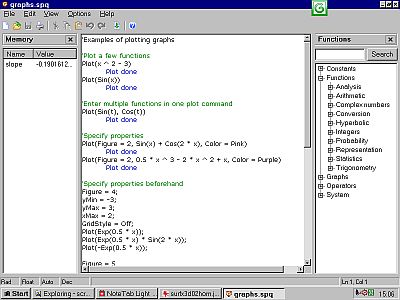
You simply enter your calculations onto the worksheet, comments and named variables allowed, and it tries to resolve your lines. This allows the easy development of the long-chain calculations typical of electrical and electronic work, but it is math rather than specifically engineering-oriented.
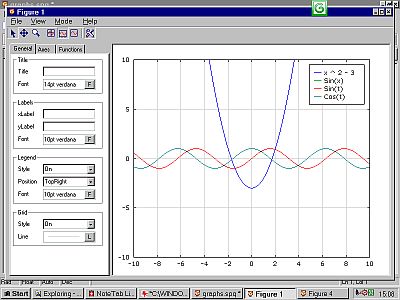
Like any powerful and thus useful software this programme requires a bit of struggle to come to grips with and you may have to dust off some old maths textbooks but, apart from a couple of quaint wrinkles, it behaves much as you would expect a hybrid text editor and calculator to work.
And with all calculations, however you do them, they need to be proofed with some known values producing expected results. If you save your calculation sheets then you have a record of what you actually did to get a particular number, and can verify (or not) that it is actually calculating what you think it's calculating. For example, expressions like Xc=1/2 Pi f C often cause problems if not explicitly coded such as 1/(2*Pi*f*C); ...
f = 1000; C = 0.1e-6; Xc = 1/2*Pi*f*C Xc = 0.00015708 Xc = 1/(2*Pi*f*C) Xc = 1591.549430919
WinPlot
by Richard Parris2D and 3D plotting of Parametric, Explicit, Implicit, and Polar representations.
Initially comes up as a minimalist blank worksurface. Although this is proving to be the most productive of the graphing packages I have, it has also been one of the most obscure to come to grips with.
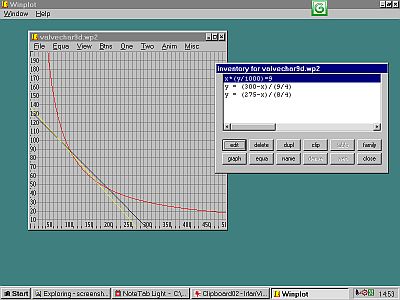
2D mode - An example of a 6GW8 loadline produced for the AVA100 amp discussion.
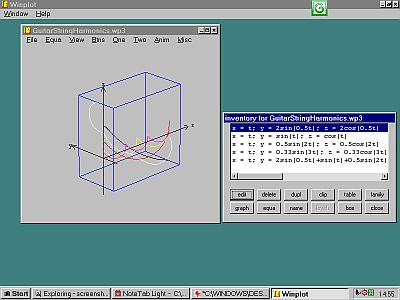
3D mode - the actual shape (white) of a string supporting a number of helical sinewaves. Note that I have to express each sinewave in the math form;
e = Emax * Sin(theta+phi) * Cos(theta+phi)
http://math.exeter.edu/rparris/
SurfX3D - Surface Explorer 3D 1v0
by Clark Dailey3D (only) graphing of Parametric {x,y,z(u,v)}, Explicit {z=f(x,y)}, and Implicit {f(x,y,z)=0} functions..
Easily the most colourful of the graphing packages I have, it seems to accept a full set of trig functions of arbitary length, and allows the definition of eight similar sub-functions named simply C1 to C8, so you can potentially plot insanely complex functions.
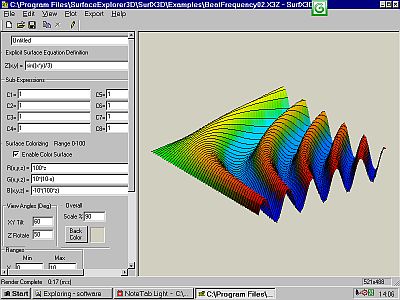
Beat notes - Two sinewaves going from unison (back) to 5 cents off-pitch (front).
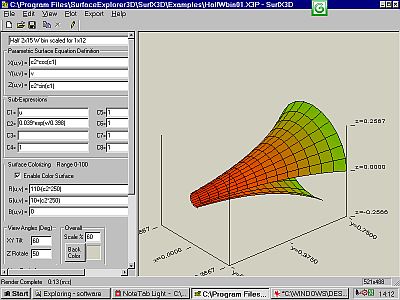
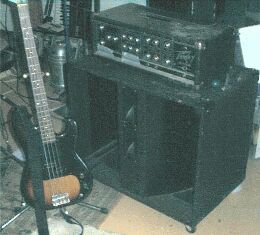
My W-Horn unwrapped with cutaway, colour shows relative pressure.
Colourisation is similarly fully under control, as is the XYZ view angle and optional mesh/gridlines.
In the help file Clark give an insight into his programmes' long and varied history, and is worth quoting to remind younger readers that some of us started out submitting decks of punchcards to overnight batch processes on mainframes, and what debugging was like before real-time access when each run had the complexity of a first test flight.
The explicit surface Z=F(X,Y) program was originally written in FORTAN on punch-cards which ran on a CDC 3400 mainframe and output to a drum line-plotter. No color support. The “advanced” FORTRAN compiler would abort the batch job on the first syntax error it found, and not display any additional errors that were hiding in the code, waiting to be found on the next run.
- 1979 - IBM / 370 mainframe FORTRAN program.
- 1985 - Compaq x86 portable PC written in GWBASIC.
- 1988 - Windows 3.1 written in C.
- 1998 - Windows NT written in Visual C++.
- 2006 - SurfX3D submitted to public domain
Which should give any language or Operating System imperialists something to think about.
I once did a major project where “mass storage” was punched paper tape (at 10 char/sec) and major edits were done by cut and splice - having experienced punch card batches I thought I was well off.
http://home.comcast.net/~kqdailey/SurfX3D/SurfX3D.htm